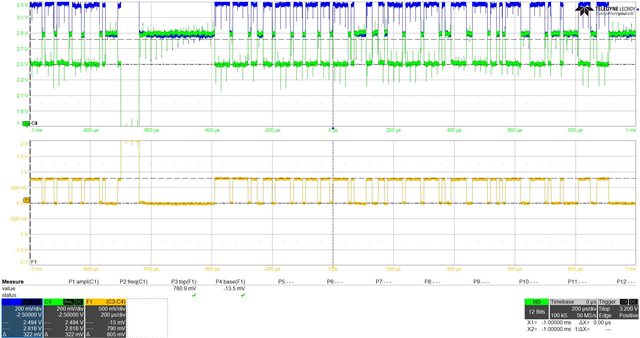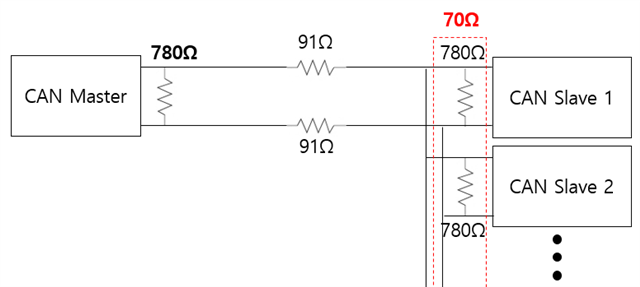Tool/software:
To check the communication success rates of data rates and the length of the CAN bus wires, I had a test.
Connect a resistor(To create resistance by the length of the bus wires) between the master board and the slave board, I tested it by changing data rates.
*Test case
1. Data rates : 100kbit/s, 250kbit/s, 500kbit/s, 1Mbit/s
2. Length of can bus wire : 1.08km(91ohm_AWG24)
* Result (success rates)
| 100k | 39.6% |
| 250k | 89.7% |
| 500k | 100% |
| 1M | 100% |
I think the communication success rates will decrease at higher data rates, I wonder why the opposite results are obtained.




